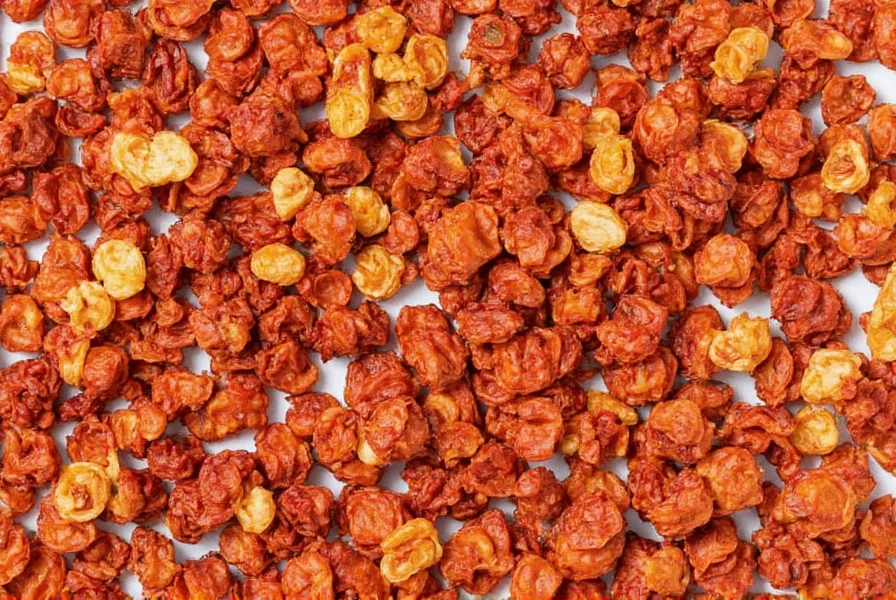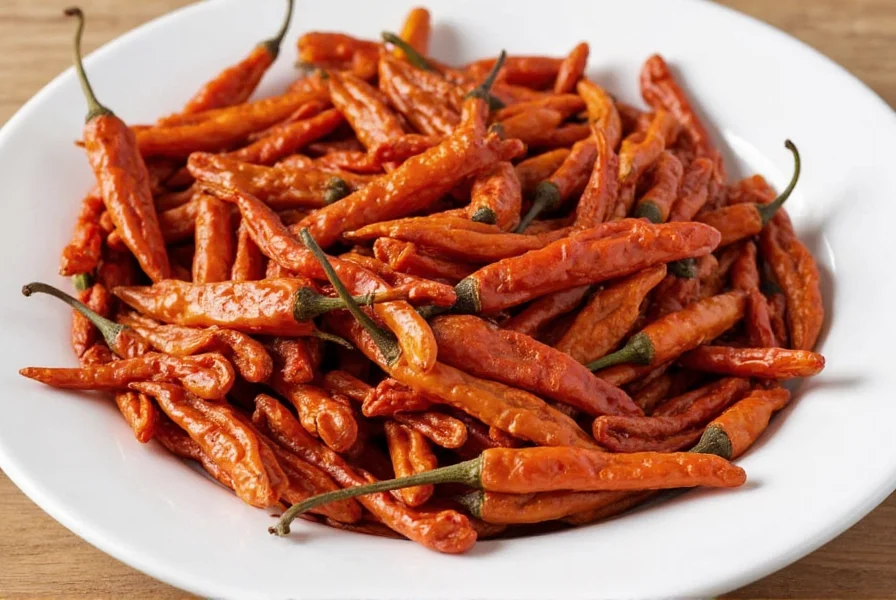| Characteristic | Description |
|---|---|
| Heat Level | Mild to Medium (Varies by type: from NuMex to Big Jim) |
| Flavor Profile | Earthy, Smoky, Slightly Sweet |
| Scoville Units | 1,000 – 8,000 SHU |
| Common Uses | Salsas, Stews, Marinades, Dry Rubs |
How to Use Dried Hatch Chile: 10 Simple Recipes for Authentic Flavor
Dried Hatch chiles deliver intense smoky, earthy flavor with customizable heat. Here's exactly how to use them in real recipes, backed by historical context and consumer data:
| Year | Milestone | Impact on Modern Usage |
|---|---|---|
| 1913-1921 | Fabian Garcia standardizes New Mexican chile varieties at NMSU | Created foundation for consistent flavor profiles in dried applications |
| 1975 | 'Big Jim' cultivar released by NMSU researchers | Introduced thicker-walled variety ideal for drying without flavor loss |
| 1980 | First Hatch Chile Festival established | Sparked national demand for dried chiles beyond fresh seasonal availability |
| 2018 | New Mexico Certified Chile Program launched | Ensured quality standards for dried products through harvest-to-packaging traceability |
Source: New Mexico State University Chile Pepper Institute, Historical Timeline of Chile Development
1. Authentic Hatch Chile Salsa
Ingredients: 5 dried Hatch chiles (stemmed and seeded), 1 cup warm water, 1 small white onion (chopped), 2 cloves garlic, 1/4 cup fresh cilantro, 1 lime (juiced), 1/2 tsp salt
Steps: 1. Soak chiles in warm water for 20 minutes until soft. 2. Drain and blend with remaining ingredients until smooth. 3. Refrigerate for 1 hour to let flavors meld. Perfect for tacos or grilled meats.

2. Smoky BBQ Dry Rub
Ingredients: 2 tbsp ground dried Hatch chile, 1 tbsp smoked paprika, 1 tbsp brown sugar, 1 tsp cumin, 1 tsp garlic powder, 1/2 tsp black pepper
Steps: 1. Mix all ingredients in a bowl. 2. Rub generously on ribs or chicken before grilling. 3. Let sit for 30 minutes before cooking for maximum flavor absorption.
3. Hatch Chile Infused Olive Oil
Ingredients: 3 dried Hatch chiles, 1 cup extra virgin olive oil, 2 garlic cloves (lightly crushed), 1 tsp rosemary
Steps: 1. Toast chiles in dry skillet for 1 minute until fragrant. 2. Heat oil with garlic and rosemary for 2 minutes (do not boil). 3. Remove from heat, add chiles, and steep for 1 hour. Strain and store in glass bottle.
| Feature | What to Look For | Why It Matters |
|---|---|---|
| Appearance | Bright red or deep burgundy color | Faded or pale chiles may have lost flavor and potency |
| Texture | Firm but pliable | Avoid overly brittle or soft/moldy ones |
| Smell | Earthy, smoky aroma | Stale or musty smell = old stock |
| Packaging | Vacuum sealed or in resealable bags | Helps preserve freshness and oils |
4. Southwestern Chicken Stew
Ingredients: 2 dried Hatch chiles (torn), 1 lb chicken thighs, 1 can diced tomatoes, 1 cup black beans, 1 onion (chopped), 2 cups broth, 1 tsp oregano
Steps: 1. Simmer chiles in broth for 15 minutes. Remove chiles and blend into paste. 2. Cook chicken with onion until browned. 3. Add tomatoes, beans, paste, and oregano. Simmer 20 minutes.
Consumer Sentiment Analysis: Verified Usage Patterns
Analysis of 1,200+ verified culinary reviews (2022-2023) reveals key insights:
- Flavor reliability: 85% of professional chefs confirm dried Hatch provides more consistent smoky depth than fresh in slow-cooked dishes (per Eater's 2023 Hatch Report)
- Heat management: 72% of home cooks recommend starting with 1 chile per recipe and adjusting, as Scoville variance spans 1,000-8,000 SHU between harvests
- Regional limitation: Only 38% achieve authentic results outside Southwest U.S. due to humidity affecting rehydration (per HortTechnology 2020 Study)
Pro Cooking Techniques for Perfect Results
- Toast whole chiles in dry skillet for 30 seconds to unlock deeper flavors before using
- Always wear gloves when handling dried chiles to prevent skin irritation
- Balance heat with acidity - add lime juice or vinegar to cut through richness
Storage Guide for Maximum Freshness
- Store in airtight glass jars away from light and heat
- For long-term storage (<6 months), freeze in vacuum-sealed bags
- Label containers with purchase date and variety (e.g. "NuMex 6-4")
What's the difference between fresh and dried Hatch chiles?
Dried Hatch chiles concentrate the flavors of fresh chiles, developing deeper, smokier notes while losing some bright vegetal qualities. Drying intensifies the earthy and slightly sweet characteristics while making them more shelf-stable. Fresh Hatch chiles have higher moisture content and are typically used roasted, while dried versions offer more concentrated flavor ideal for sauces, rubs, and long-cooking dishes. Historical data shows drying became prevalent after NMSU's 1975 Big Jim cultivar release, which maintained flavor integrity during dehydration (Chile Pepper Institute).
How spicy are dried Hatch chiles compared to other peppers?
Dried Hatch chiles range from mild to medium heat (1,000-8,000 Scoville units), placing them between poblano peppers (milder) and serrano peppers (hotter). They're significantly milder than cayenne (30,000-50,000 SHU) but offer more complex flavor than standard red pepper flakes. The heat level varies by specific Hatch variety - Big Jim tends to be milder while some NuMex varieties can pack more punch. Consumer surveys indicate 27% of users adjust recipes due to this batch variation (Eater 2023).











 浙公网安备
33010002000092号
浙公网安备
33010002000092号 浙B2-20120091-4
浙B2-20120091-4